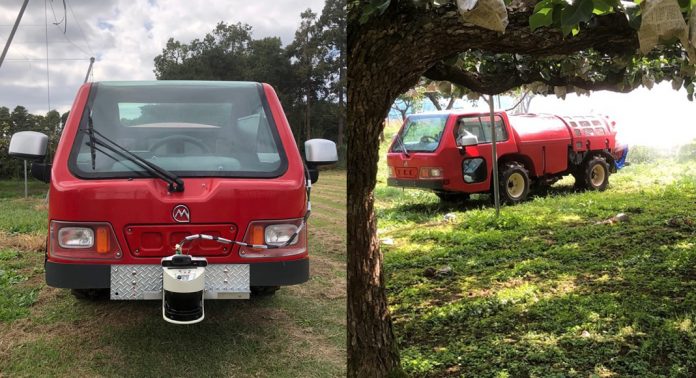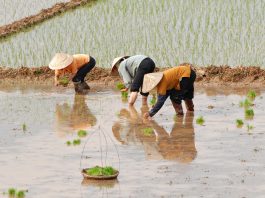Professor Kazuo Watanabe, from the Tsukuba Plant Innovation Research Center (T-PIRC) at the University of Tsukuba, explains how the centre is working to tackle the challenges of climate change and food security.
In April 2017, the University of Tsukuba launched the Tsukuba-Plant Innovation Research Center (T-PIRC). To address the global issues of sustainable food and energy, the centre aims to support research and development on climate change, food security,
and ‘eco security’ and to accelerate the process of their industrial applications, working together with domestic and international private and public sectors.
T-PIRC is composed of a centre (including a Joint Usage/Research Centre as a ‘Plant Transgenic Design Initiative (PTraD)’ appointed by MEXT), four divisions, and two units. By integrating these research units, we develop a ‘one-stop shop’ for plant biotechnology and bioresources utilisation, covering basic and applied gene and genetic resources research through to industrial applications which will contribute to a sustainable society. In addition, the outcomes of cutting-edge research activities for industrial applications is expected to contribute to human resource development. We imagine the future and create what it ought to be.
For the further development of plant biotechnology, we will continue to increase our efforts in building an important global base for research and development on plant biotechnology and bioresource use/reuse and its industrial applications. We would appreciate your continued support and encouragement.
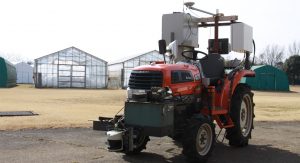
Facilities
We have three major clusters of facilities:
- The Gene Research Center: the centre explores and fosters research seeds that would lead to the development of highly functional and highly value-added plants. Our transgenic competitive greenhouses and isolated fields are managed by a world-leading team who, amongst the Japanese academic sector, have the most experience in handling genetically engineered plants;
- The T-PIRC Farm (Smart and Sustainable Agriculture Research Division): this promotes research on the development, production, and distribution of agricultural products using the latest technology to fulfil sustainable agriculture objectives. We have a large area of farmland and numerous facilities for various research and development needs; and
- The Industrial Zone for private-university collaboration on applied research and development (Collaborative Research Division): this works together with domestic and international private and public sector partners on research and development. It will take innovation from the plant and agricultural sciences into industrial uses.
Generally speaking, our mission is to provide solutions which will contribute to mitigating climate change and food security problems in terms of how these issues connect with plant sciences, and we aim to achieve this by:
- Developing technology to achieve the more efficient genetic modification of plants through the use of biotechnology, especially genome editing methodologies;
- Genetic engineering, especially genome editing, as applied to crops such as tomatoes, melons, eggplant, and potatoes. Trees such as eucalypts and poplars are also targets, and our work here involves industry collaboration;
- Risk assessment and the management of regulatory research on genetic engineering products in the field;
- The production of high-value metabolites such as protein and antibodies in plants by using the plant transformation system;
- Proprietary bioresource creation for tomatoes;
- The development of legal models under diverse international laws for conducting natural genetic resource collection expeditions;
- The mega-data assessment of plant secondary metabolites to discover new compounds and functions;
- Developing the environment for an innovative production system that takes ageing societies and UN Sustainable Development Goals (SDGs) into consideration. This may be in the form of a plant factory for urban agriculture with energy efficient and recyclable system using the contents from biotechnology products or new crop genetic resources introduced from overseas; and
- The continuation of the multi-disciplinary approach we have employed in our recent efforts, which has seen areas such as AI, robotics, and big-data informatics become integrated in the system creation with university-wide collaboration and co-operation with the private sector at a global scale.
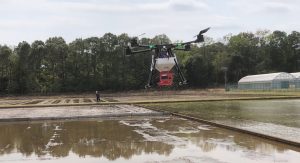
The Smart Machinery and Field Sensor Development Project Team
Upon considering how labour intensive the application of pesticides can be – as well as the importance of minimising their usage – a Strategic Innovation Project (SIP) has been assigned to the University of Tsukuba along with National Agricultural Research Center (NARO), Maruyama Limited, and Mitsubishi Mahindra Agricultural Machinery Limited under the Smart Food Value Chain Initiative. The project aims to utilise a machine vision system in an orchard, which produces Japanese pears and apples and where GPS signals are interrupted due to both the canopy and the fences around the orchards.
The development of Unmanned Aerial Vehicles (UAVs) has gained significant momentum in Japanese agriculture in recent years. Thermal and multispectral sensors are often used to obtain information in a short time, which can be used to better understand plants’ water stress and growth conditions.
The new research scheme is therefore aiming to develop a UAV smart sprayer which will use image analysis at the different stages of orchard growth. The collected images will be subjected to the Mutual Subspace Method (MSM) and Convolution Neural Network (CNN) to accurately develop the classifiers: spray and non-spray areas from the top of the canopy. These units can be enabled remotely, and navigation is achieved based on natural landmarks such as tree trunks, which are recognised using 3D cameras and LIDAR.
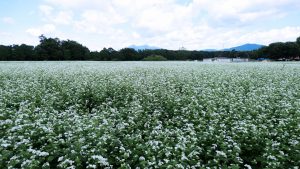
The future
Looking ahead, we have a number of plans, including:
- Streamlining new genome edited crop varieties for testing and demonstrating applicability;
- Disseminating some of the transgenic or genome-edited plants for global resilience on climate change, such as transgenic trees which can simultaneously enhance vegetation recovery and biomass supply;
- Uncovering the value of some of the under-utilised genetic resources that are available worldwide; and
- Creating global partnerships in research towards the use of science and technology for achieving the SDGs.
The utilisation of an impressive selection of advanced technologies – including genome editing, metabolomics, and a combination of artificial intelligence, robotics, and big-data systems – is enabling significant progress in the research and development taking place in this area. These technologies are providing a way to mimic and manage production systems in an artificial environment. In addition, research is contributing to knowledge about risk assessment (RA), risk management (RM) technology, and intellectual property rights (IPR) related to plant genetic resources.

Our research team has a number of exciting and ambitious plans for the future, including the dissemination of some of the transgenic and genome-edited plants they have developed in order to assist with global resilience against climate change. In addition, the partnerships they are forging will also help to achieve the SDGs. As such, this impressive research may help fulfil some of the most pressing economic, social, and environmental challenges facing the world today.
The Tsukuba Plant Innovation Research Center (T-PIRC) aims to develop the next generation of plants with high function and high value, as well as next generation technology for the production of such plants and, indeed, is working to acceleration of societal adaptations and applications. To attain these goals, T-PIRC promotes collaboration among industry, government, and academia to share and concentrate knowledge so as to conduct seamless R&D toward social adaptation whilst also building an incubation ecosystem to help start-up ventures. We are therefore calling for extensive partnerships around the globe.
Professor Kazuo Watanabe
Tsukuba Plant Innovation Research Center
(T-PIRC)
Faculty of Life and Environmental Sciences
University of Tsukuba
watanabe.kazuo.fa@u.tsukuba.ac.jp
www.t-pirc.tsukuba.ac.jp/en/
www.youtube.com/watch?v=b5f3hngd5L8&feature=youtu.be
www.t-pirc.tsukuba.ac.jp/wp/wp-content/themes/tpirc/pdf/T-PIRC-brochure.pdf
Please note, this article will also appear in the fourth edition of our new quarterly publication.

